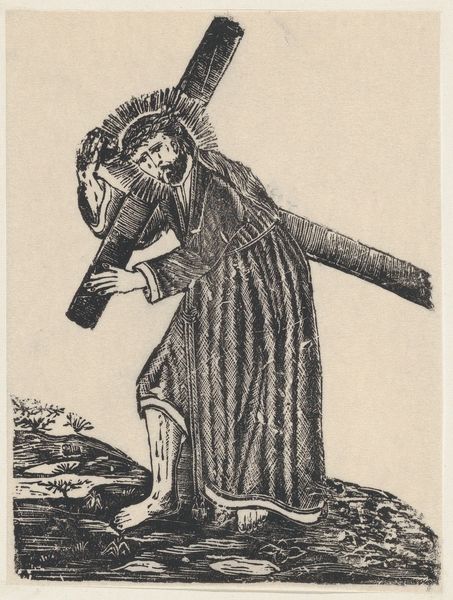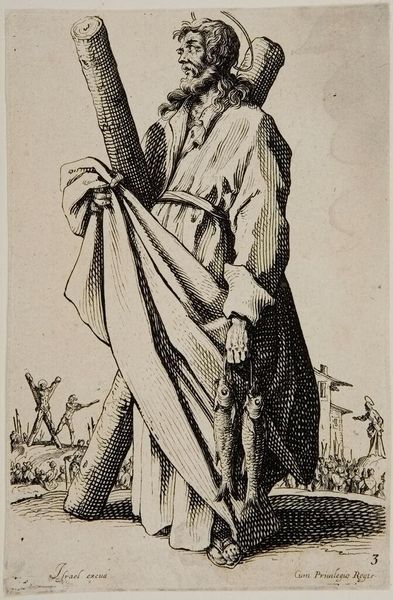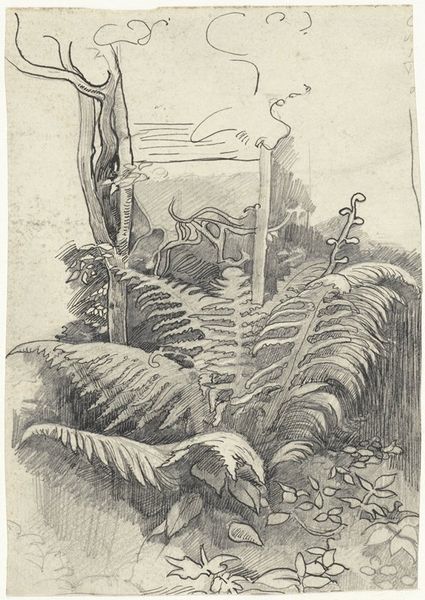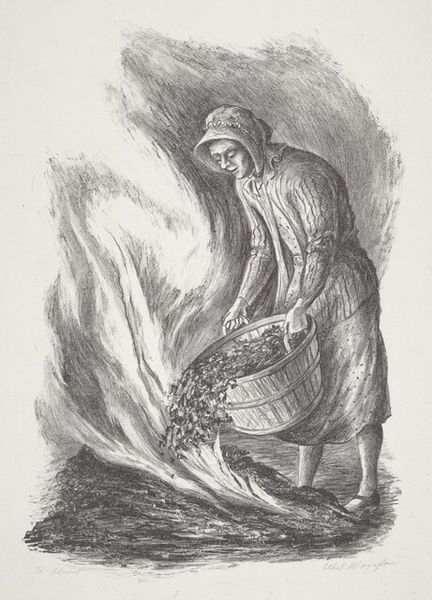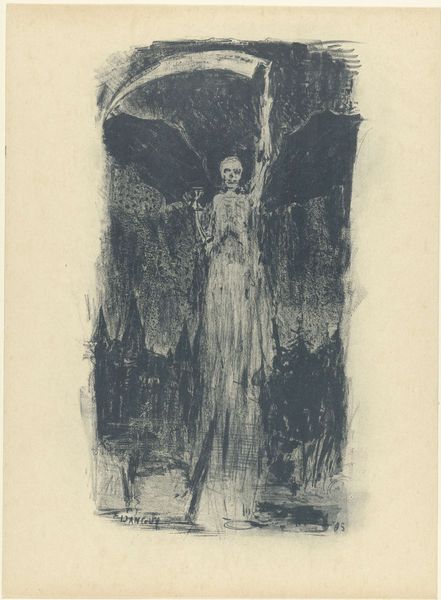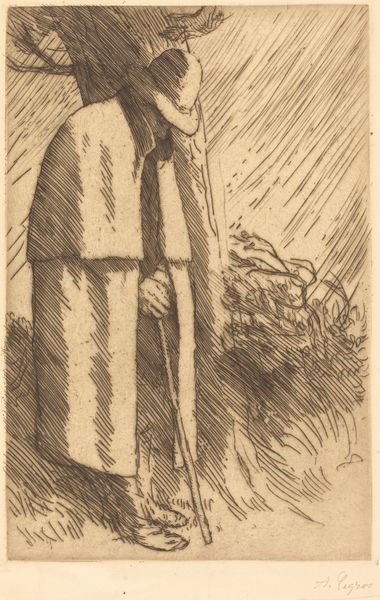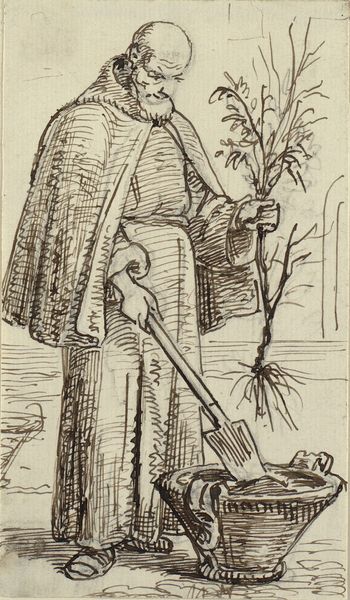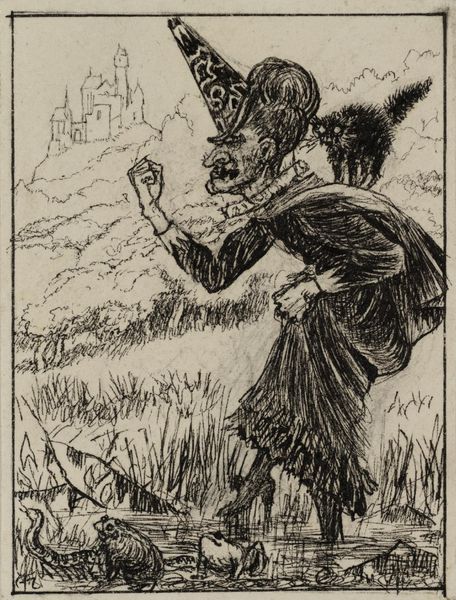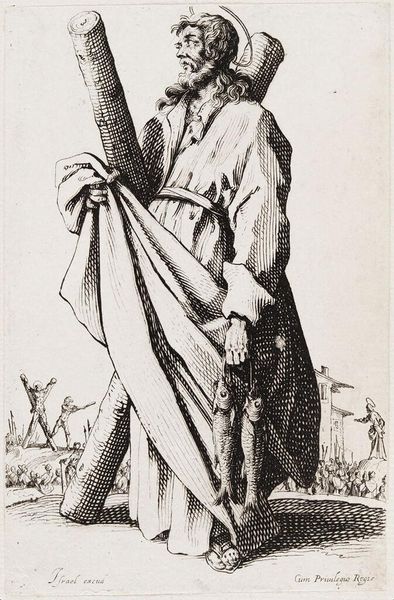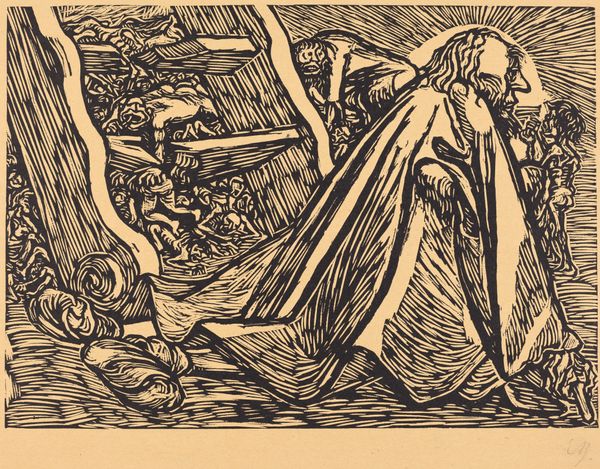
drawing, ink, pen
#
drawing
#
narrative-art
#
landscape
#
figuration
#
ink
#
momento-mori
#
symbolism
#
pen
#
history-painting
Copyright: Public Domain: Artvee
Curator: Looking at this drawing, the immediate feeling I get is one of stark bleakness. The black ink against the pale ground—it's a minimalist execution with maximal emotional impact. Editor: This pen and ink drawing is by Maximilien Luce, created somewhere between the late 19th and early 20th century. It's titled *Death as a Reaper.* It depicts, unsurprisingly, a skeletal figure of death in a field. Curator: Absolutely. The reaper, centered and dominant, really drives home the pervasiveness of mortality, which is not necessarily original, yet here, is expressed very simply and quite powerfully, echoing the old memento mori tradition. Editor: Indeed. The symbol of the Grim Reaper itself is so deeply rooted in Western cultural memory. But I find Luce's use of line interesting, notice how he contrasts the detailed foreground with that abstracted, almost symbolic field of wheat. It almost reads as stagecraft. Curator: Good point. The field of wheat almost takes on a collective character—are they ready for "harvest," implying some greater societal or historical moment? And that scythe... its shape has such primal, agricultural connections; here weaponized, so to speak. Editor: And that slight forward lean, it infuses a sense of imminence. The way the lines coalesce around the face really concentrates the viewer’s attention there; you almost feel its gaze upon you. What could this cultural object, its inherent symbolism, convey at a human level? Curator: The way Luce rendered death is devoid of drama and theatricality, he successfully represents Death, and the anticipation of unavoidable fatality, using only black ink, which creates, for me, a space to confront the ever-presence of human termination in simple yet universal terms. Editor: Considering its stark composition, it prompts thoughts about the symbolic grammar of visual culture, and in the ways that an image becomes an anchor for shared grief or existential thought. Curator: Precisely. By looking at this artwork, it is clear that Luce presents us a symbolic vision, which serves not only as a marker for the presence of an end, but also a constant reminder that any moment, like a ripe wheat field, may become harvest. Editor: I agree, the artwork certainly brings into sharp relief a very ancient visual formula with such potent immediacy, such economy of visual expression.
Comments
No comments
Be the first to comment and join the conversation on the ultimate creative platform.
